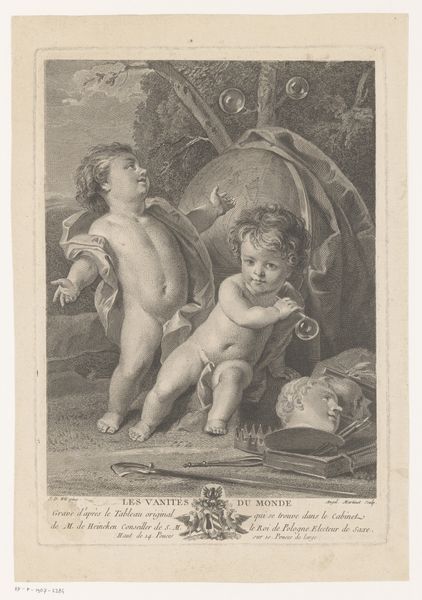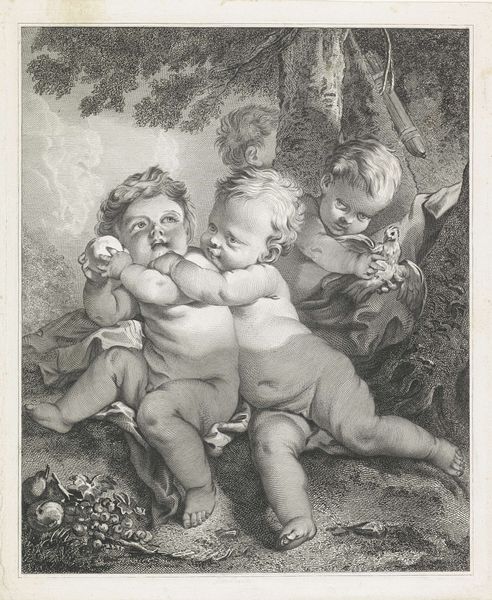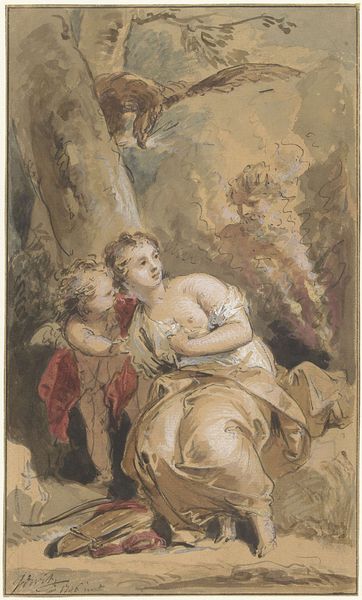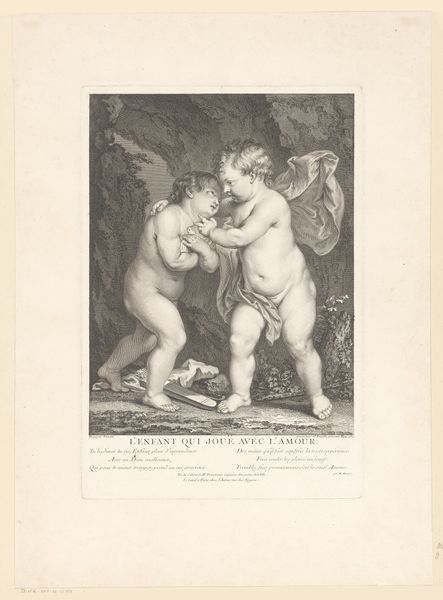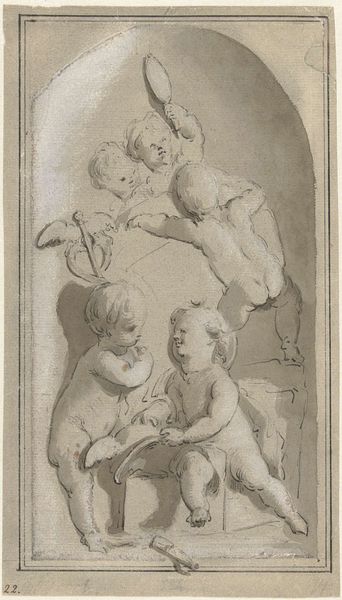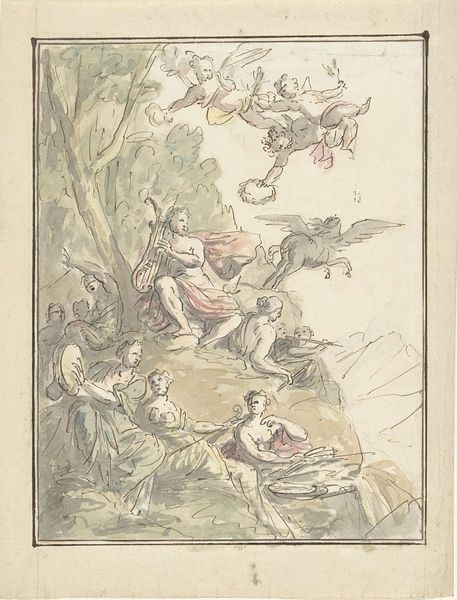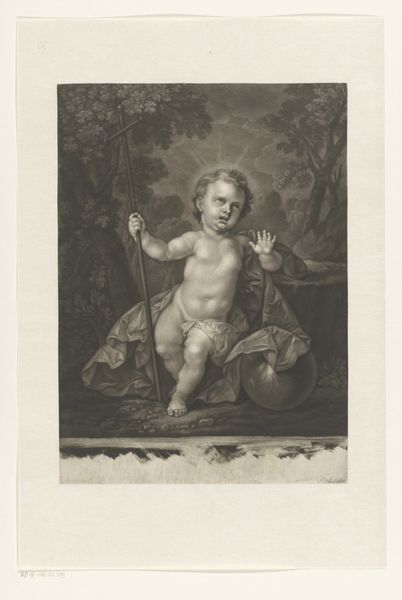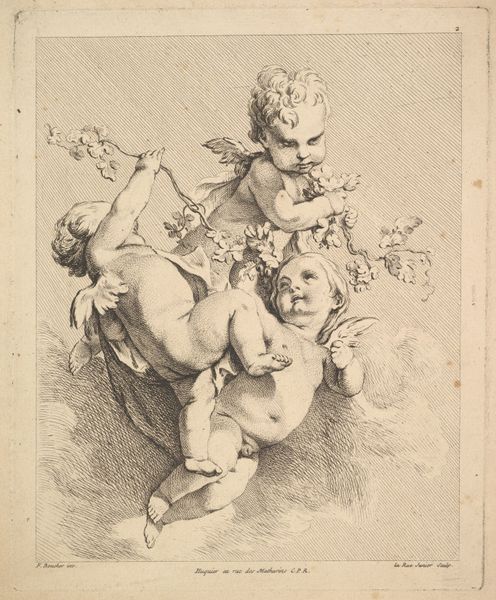
Dimensions: height 157 mm, width 131 mm
Copyright: Rijks Museum: Open Domain
Editor: Here we have Jacobus Buys' "Allegorie op het Geloof," a watercolor from 1775, currently held in the Rijksmuseum. It's quite striking how these figures emerge from what feels like a hazy dreamscape, almost floating on the paper. What's your take on it? Curator: The formal elements immediately draw the eye: the composition's asymmetry, the Rococo pastel palette. Consider how Buys orchestrates our gaze. It begins with the sculptural base and follows the upward, gestural movements of the putti. This ascension underscores the theme of "Geloof," or Faith. Notice the stark contrast between the defined figures and the sketch-like background; how might this deliberate choice shape our interpretation of space and form here? Editor: I see what you mean, the background *is* very soft, compared to the figures... It feels like the cherubs are breaking out of the hazy background! Are the torch and extinguished lamp meaningful choices of objects too? Curator: Precisely! The flickering torch, presumably representative of knowledge and enlightenment, plays against the extinguished lamp. This visual tension activates the composition. The cherubs gestures, one points while the other seemingly observes, reinforce the formal dynamic. The composition compels the viewer into this relationship. Buys strategically leads the eye throughout. What happens, however, if one neglects or omits that crucial element when examining the piece? Editor: Right, if you just looked at it without considering the symbolism or the Rococo style, you might miss a lot of the depth in Buys’ decisions. It gives new perspective when thinking of a singular interpretation! Curator: Exactly. By concentrating on the elements themselves, we arrive at understanding a holistic idea and the core significance to create meaning through materiality.
Comments
No comments
Be the first to comment and join the conversation on the ultimate creative platform.

